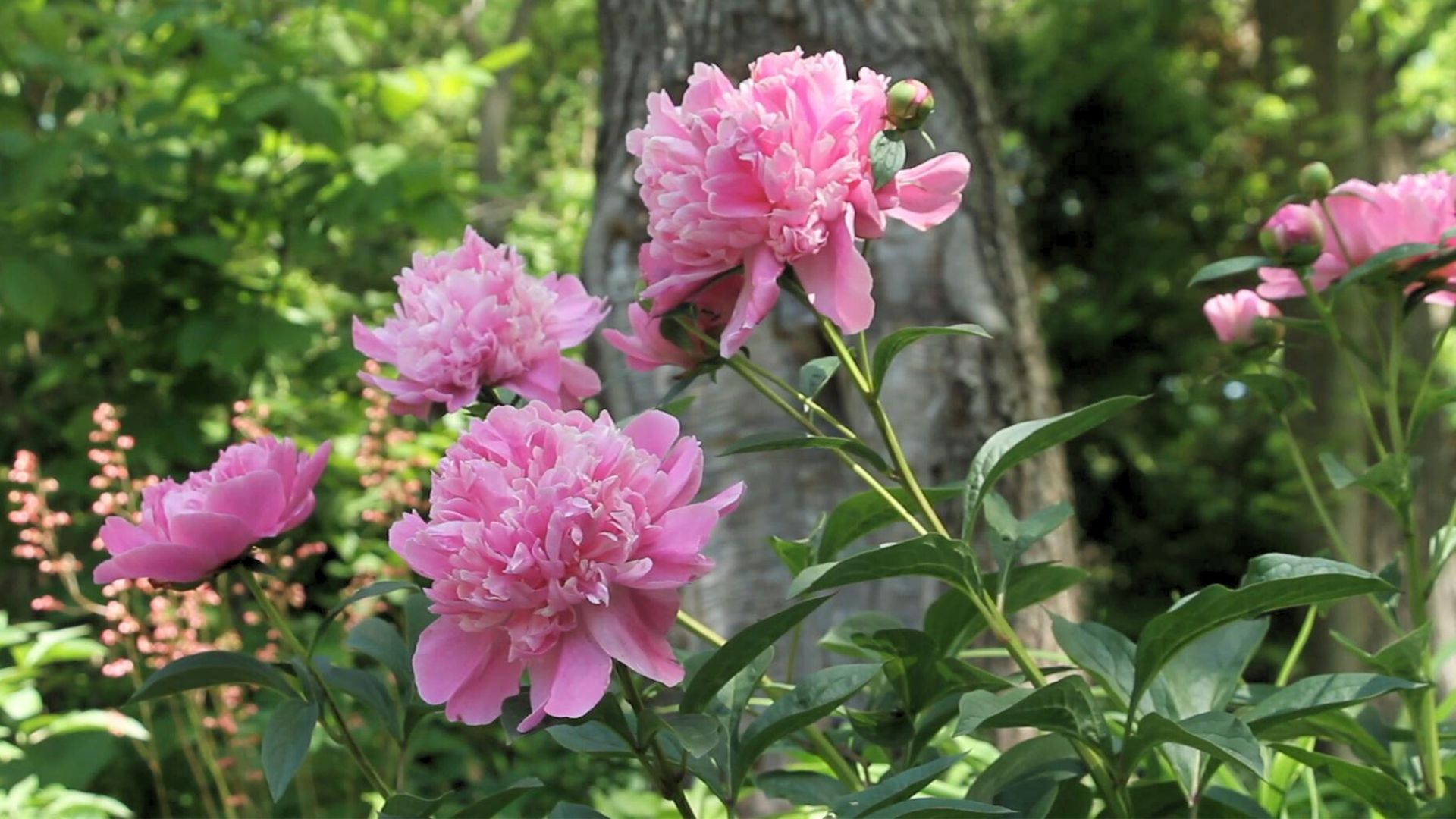Top 10 Questions About Peony Plants
Because they are such a garden favorite, we get lots of questions about peonies. Learn all about these gorgeous plants and how to care for them.


It can be disheartening to see your beautiful peonies stop producing flowers due to unforeseen challenges. That's why it is the goal of Gardening Know How to help you avoid these issues or at the very least amend them, by providing the best information possible so your peonies will flourish and bloom for many years to come - and that includes answering the questions about peony care that plague us all. Here are the top questions about growing peonies.
1. How to take care of peony flowers?
Once established, peonies bloom proficiently and require little maintenance. Start them off right by choosing a sunny location with good drainage and fertile soil. Peony plants are slow to establish and can take several years to produce abundant flowers.
It's essential to plant peonies at the correct depth and avoid applying thick layers of mulch which can build up over time and bury the roots. Regular maintenance includes deadheading the spent flowers, cutting an herbaceous peony to the ground in the fall, or pruning dead branches from a tree peony. Herbaceous peonies benefit from periodic root division.
2. How deep to plant peonies?
This is an excellent question, as peonies are shallow-rooted plants and require a six-week chilling period in the winter for buds to form. If peonies are planted too deep, few, if any flowers will develop. When transplanting, moving or dividing peony, replant the roots to a depth of 2 to 3 inches (5 to 7.6 cm). I like to position the roots with the eyebuds pointing up through the surface of the soil. Even when planted at the correct depth, it can take up to three years for the newly transplanted peony to bloom.
3. When should you move peony plants?
The best time to move a peony is in the fall. I prefer preparing the new site prior to digging up the plant. This allows me to replant quickly which helps reduce transplant shock. I also like to incorporate compost into the soil to improve drainage and increase soil fertility. Since peonies prefer full sun, try to choose a new location that won't be shadowed by overgrown trees in a few years. To make the peony easier to handle, cut back the stems to a few inches above the ground. Once out of the ground, the peony can be divided before replanting in its new home.
4. How to care for container grown peonies?
Caring for a peony in the ground is much easier than one in a pot, but container-grown plants are often the only choice for renters and high-rise dwellers. Peonies are large plants, so begin by choosing a planter that's at least 18 inches (46 cm.) deep by 18 inches (46 cm.) tall. Use a quality potting soil that provides nutrients and facilitates drainage. Planting the peony at the correct depth and providing the proper chill period is essential for flowering. The correct amount of chill can often be attained by overwintering potted peonies in an attached, unheated garage or garden shed.
5. How to treat powdery mildew on peonies?
Powdery mildew is easily identified by the white residue on the peony's foliage. Prevention includes locating peonies in full sun. High temperatures and direct sunlight can inhibit the growth of this fungal disease and prevents its spread by killing the spores. Once peony plants become infected, treat them with an organic fungicide, horticultural oil or neem oil. You can also brew up a homemade fungicide solution using one tablespoon of baking soda, canola oil and bleach-free dish soap to a gallon of water. Spray this on the peony every 10 to 14 days during cool weather.
Sign up for the Gardening Know How newsletter today and receive a free copy of our e-book "How to Grow Delicious Tomatoes".
6. When do you divide peonies?
The best time to divide peonies is late summer (September in the Northern Hemisphere) or early fall. By this time, the peony should be done blooming and entering its dormancy period. I find moving or dividing peony at this time of year reduces the likelihood of heat stress, but still gives the transplant time to become reestablished before winter. Cutting the stems back to a few inches above ground level will conserves the peony's energy and makes the job of moving the plant much easier.
7. Why hasn't my peony produced any buds?
There can be several reasons why peonies fail to flower. If the peony was transplanted recently, it can take up to three years to flower profusely. Lack of sunlight is another reason for a failure to produce buds. Over time, the canopy from nearby trees can expand and block light from reaching the plant. Peony roots also require an adequate chill period to form buds. They grow best in USDA hardiness zones 3 to 8. The roots must be not be planted too deep or bud formation will be impeded. Mulch can also build up over the years, burying the roots deeper than recommended.
8. How to prepare peonies for winter?
The answer depends on the type of peony. Herbaceous peonies die back to the ground in the winter. I find it best to clean up the dead plant material and dispose of it in the trash, as the debris can harbor pests and disease. It's not advisable to cover peony roots with mulch or straw since they need a chill period in order to bloom the following spring. Tree peonies lose their leaves in the fall, but the branches remain intact. Tree peony can be lightly pruned to remove dead wood and improve their shape.
9. Should you let peony go to seed?
Peony plants expend energy to form seeds. Deadheading spent flowers redirects that energy into more useful areas, like energy storage for the next year's growth. Peony plants can be deadheaded as soon as the flower fades.
When I deadhead, I like to cut the flower stem back to where the plant has healthy green leaves. This also makes the plant look nicer. The primary reason to allow an open-pollinated peony to produce seeds is for propagation. Although there are many heirloom varieties of peony available, most gardeners find it easier to propagate peonies by root division.
10. When/how should you cut back peony plants?
Pruning of peonies is recommended as part of their annual care. In addition to deadheading spent flowers, herbaceous peonies can be cut to the ground in the fall. Do this once the foliage has yellowed and begun to die back. Be sure to cut several inches above ground level to avoid shearing off the bud eyes. These will develop into stems, leaves and flowers the following spring. Tree peonies develop woody stems which don't die back each year. Instead of cutting tree peonies to the ground, prune dead branches and clean up the fallen leaves.
We all have questions now and then, whether long-time gardeners or those just starting out. So if you have a gardening question, get a gardening answer. We're always here to help.

Laura Miller has been gardening all her life. Holding a degree in Biology, Nutrition, and Agriculture, Laura's area of expertise is vegetables, herbs, and all things edible. She lives in Ohio.